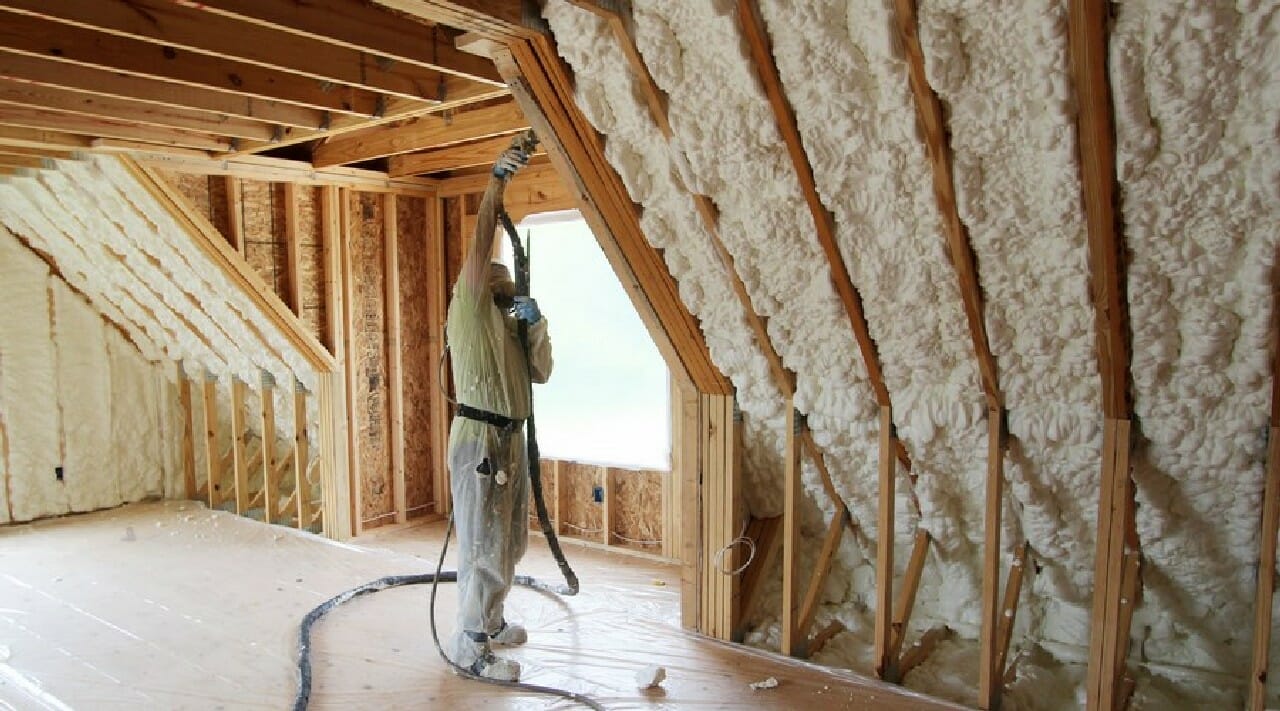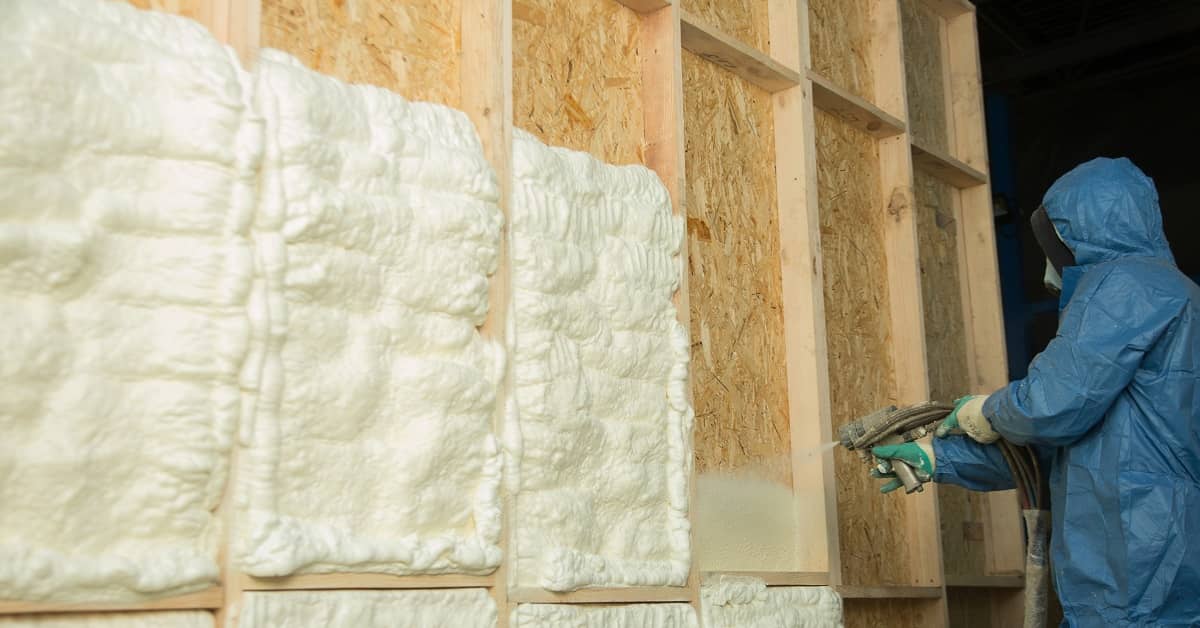Open cell spray foam plays a specific role in residential insulation, particularly when applied to wall cavities where flexibility, sound dampening, and cost-effectiveness are more important than structural support. Its characteristics make it better suited for interior applications rather than exterior walls or load-bearing surfaces.
This guide explains when to use open cell spray foam in residential walls, offering practical insight into its benefits, limitations, and best use cases. Whether you’re building new construction or retrofitting, the information below will help you make informed decisions based on real-world scenarios and performance needs.
Best Situations for Open Cell Spray Foam in Residential Walls
Open cell spray foam is a soft, low-density material known for its expansion properties and air-sealing ability. While it’s not designed to add structural strength, it performs well in areas where flexibility and vapor permeability are preferred.
Interior Partition Walls
Interior walls separating rooms are often insulated for sound control and airflow management. Open cell foam is ideal in these cases because:
- Its expansion helps fill irregular cavities
- It absorbs sound better than rigid insulation
- It allows for minor structural movement without cracking
Because these walls don’t carry external loads or face weather exposure, the need for high compressive strength or moisture resistance is minimal. Professional spray foam insulation service balances insulation and acoustic control.
Budget-Conscious Applications
Compared to closed cell foam, open cell is more affordable per board foot, making it a better choice when budget matters.
- Requires less material per square foot due to higher expansion
- Lower per-board-foot cost
- Easier and faster to install in large wall areas
This is particularly helpful in full remodels or custom homes where many non-load-bearing walls need insulating.
Drying Potential in Framed Walls
Vapor permeability is a key benefit of open cell spray foam. Unlike closed cell, which acts as a vapor barrier, open cell allows moisture to pass through and dry if water ever enters the wall cavity.
- Ideal in mixed-humidity climates where drying inward is beneficial
- Reduces risk of trapped moisture compared to impermeable materials
- Supports long-term wall health in certain assemblies
This trait makes it suitable for conditioned spaces where small leaks or condensation might otherwise lead to mold.
Comparing Open Cell Foam to Other Materials
To understand when to use open cell foam, compare its properties to other insulation types used in residential walls:
| Feature | Open Cell Foam | Closed Cell Foam | Fiberglass Batts |
|---|---|---|---|
| Density | ~0.5 lb/ft³ | 1.75–2 lb/ft³ | Low |
| R-value per inch | ~3.5 | ~6.5 | ~3.2 |
| Vapor permeability | High | Low | High |
| Sound dampening | Good | Moderate | Moderate |
| Cost per square foot | Lower | Higher | Lower |
| Best for interior wall use | Yes | Sometimes | Yes |
This comparison shows that open cell foam is most advantageous in non-structural wall applications where sound dampening, affordability, and drying ability are priorities.
Moisture and Climate Considerations
Climate plays a significant role in insulation selection, and open cell spray foam performs best under certain environmental conditions.
Mixed and Mild Climates
In areas with moderate humidity or mixed-temperature seasons, open cell insulation supports wall assemblies by allowing them to “breathe.”
- Reduces condensation risk behind drywall
- Allows wall cavity drying toward the interior
- Works well in combination with vapor retarders where needed
This makes it practical for southern and coastal U.S. zones where vapor drive varies throughout the year.
Avoiding High-Moisture Areas
While open cell foam resists air movement, it absorbs water. It’s not suited for exterior walls, basements, or places where high humidity or water intrusion is a concern.
- Not recommended for crawl spaces or below-grade walls
- Should not be installed where leaks are likely
- Works best where moisture can escape or dry out over time
Proper site evaluation is critical before choosing open cell foam for wall insulation.
Sound Control and Comfort
Homeowners often choose open cell spray foam insulation service to reduce noise transfer and improve comfort in bedrooms, offices, or bathrooms.
Acoustic Performance
Open cell foam dampens airborne noise due to its spongy structure. While not a dedicated soundproofing material, it offers:
- Reduction in voice transmission between rooms
- Quieter HVAC duct runs inside walls
- Better acoustics in shared living areas
Unlike fiberglass or cellulose, the foam adheres to the wall cavity completely, eliminating gaps that carry sound.
Comfort in Shared Spaces
Rooms where comfort and quiet matter—like nurseries, home offices, or bedrooms—benefit from foam’s ability to soften sound and regulate airflow. It also helps reduce drafts from poorly sealed outlets or framing gaps.
Application Thickness and Wall Assembly Considerations
Knowing the proper thickness and layering is essential for maximizing the performance of open cell foam.
Typical Application Depths
In standard 2×4 framed residential walls, installers apply open cell foam to:
- A depth of 3 to 3.5 inches (stud cavity filled)
- Provide an R-value of approximately 13
- Create a continuous air seal
In 2×6 framing, a thicker application increases R-value but may require a vapor retarder, depending on climate zone.
Code Compliance and Hybrid Use
Building codes in colder zones may require vapor control layers when using open cell foam. Hybrid insulation systems are sometimes used to meet performance and moisture requirements.
- Open cell interior + rigid foam exterior
- Open cell spray + smart vapor retarder
- Foam with vapor-retardant drywall finishes
These combinations allow builders to maintain flexibility while staying code-compliant.
Common Questions
Is open cell spray foam safe to use in exterior walls?
Open cell foam is generally not recommended for exterior walls due to its moisture absorption. In climates with low humidity and proper wall design, it may be used with additional vapor controls, but it’s typically better suited for interior applications.
What R-value can I expect from open cell foam in 2×4 walls?
An average application of open cell foam in a 2×4 wall cavity provides an R-value of 13 to 14. It depends on the installer’s application depth and consistency.
Does open cell foam expand more than closed cell?
Yes. Open cell foam expands up to 100 times its liquid volume, which helps it seal gaps and voids better. Closed cell expands less, but it forms a denser, rigid structure.
Can I install open cell foam myself?
Spray foam installation should be performed by certified professionals. Open cell foam requires careful control of temperature, humidity, and mixing to ensure performance and avoid off-gassing or improper curing.
Conclusion
Open cell spray foam is a flexible, cost-effective insulation choice for residential interior walls. It offers strong air sealing, acoustic control, and vapor permeability, making it especially useful in non-structural wall assemblies and sound-sensitive areas.
Understanding where open cell performs best helps avoid misapplication and ensures lasting comfort. In the right context—interior partitions, mixed-climate walls, and budget-driven projects—it delivers real performance without overspending.
FAQs
Can open cell foam be used in ceilings? Yes, it’s often used in cathedral ceilings or between floor joists when paired with vapor control layers. It offers good air sealing and sound dampening.
Is open cell foam flammable? Spray foam, including open cell, is treated with flame retardants but remains combustible. Building codes require it to be covered with an ignition or thermal barrier, such as drywall.
Does open cell spray foam mold? The foam itself resists mold growth, but it can absorb and hold water. If moisture enters and doesn’t dry, the surrounding materials may develop mold over time.
How long does open cell foam last? When properly installed, it can last the life of the building. It does not sag or degrade under normal conditions but should be protected from prolonged water exposure.
Can open cell foam improve energy efficiency? Yes. By sealing air leaks in walls and cavities, it reduces HVAC load and improves thermal performance—especially in interior partitions and attics.
Reviewer: Lily Johnson offered her feedback after reviewing this post. With 8 years in the spray foam insulation field, her suggestions centered around improving outreach to homeowners looking for quality insulation solutions.

